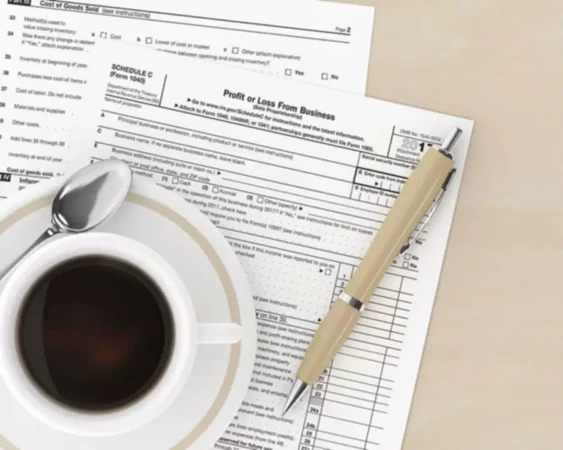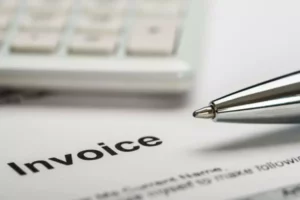Overview
Income, office rent, taxes, logistics, payroll, purchase of supplies, and other expenses are all operational activities. When it comes to expenses and incomes with deferred payments, obligations, deadlines for fulfilling obligations, and so on, you can get confused and not understand where the company earns and where it loses. That’s what a P&L report is for, to see your profit and loss.
The Profit and loss statement shows how much a business is making and whether it is making any money at all. It is the main document of the business, reflecting its efficiency and effectiveness. It is from this report that analysts and investors can find out what the company’s revenues and costs are and what net profit this company has ultimately earned.
A good level of profit is the main internal source of the current and long-term development of the business, which contributes to the possibility of increasing capital and growing the business. It is the main source of growth in the market value of the organization. Profit is also considered to be an indicator of the company’s creditworthiness and competitiveness in the presence of a stable and sustainable level of profit. It serves as an assurance that the company is able to fulfill its obligations before other parties.
What does it consist of?
Consider the key items of the Income statement:
Revenue from Sales of Goods/Services
Sales revenue is the total revenue from the sale of an enterprise’s main products or services. This does not include proceeds, for example, from the sale of company property or the sale of investment property of a business. Such income will be reflected under the “Other income”.
It is calculated on the basis of fulfillment of orders, sale of goods to customers, or provision of services to them. When you have shipped a product or provided a service to a client, proceeds arise. Even if the money arrives earlier or later, the revenue is still considered to be earned at the time of shipment.
Cost of Goods/Services Sold
This item reflects costs directly related to the production of goods sold, such as the purchase of materials and spare parts to make the product, payment of wages to workers who make the goods or provide the services, and related overhead costs (electricity, fuel, and so on).
Gross margin
This is what the business makes after all the costs of making the product or delivering a service are covered but before deduction of fixed costs of doing business (administrative and other costs).
Operating Expenses
These are other expenses a business has incurred that are not tied to the actual production of the products. They can be divided between a research and development category and selling, general, and administrative category.
Administrative expenses: expenses related to the management of the company as a whole. These can be expenses for administrative and management personnel, depreciation, transportation costs, services of third parties, rent.
Selling expenses: costs associated with the sale of products, for example, export duties, sales personnel costs, marketing costs, transportation costs for the delivery of products.
Some businesses choose to simply list their office supplies, rent, salaries, and all the other expenses without grouping them.
Operating income
This line simply represents a difference between revenue and expenses. Operating income is unaffected by taxes and withdrawals. It is often considered to be a more important value on the report and the final bottom line.
Other income and expenses
Other operating expenses/income, net. Net means that this item reflects the balance of other operating income and other operating expenses. Depending on which transactions overweigh in terms of the amount of income or expenses, this item will have a positive sign or a negative one.
Other income usually includes income from the sale of property, compensation from court cases, fines, penalties, social expenses, reserve deductions, etc. In other words, these are cash inflows and outflows from activities other than operating. You can see anything from interest and profit (loss) on securities and interest on loans to amounts earned from dividends.
Income before provision for income taxes and interest
The only difference from the operating expenses is that this line takes into account any adjustments the other income and expenses made to the operating expenses, which can be significant in some cases.
Income taxes
This is a line that shows all the money that went to cover the tax obligations.
Net profit
This is the bottom line or profit net of taxes. It is the final financial result of a report that shows how much remains at the disposal of the owners at the end of the period and can be used for investments or dividend payments.
Dividends/Withdrawals
If the company pays dividends, this line would show the amount of money withdrawn to pay the dividends. If there are no dividends, it can reflect owner withdrawals.
Retained profit for the period
Just like the name says, this is the amount of money earned from sales of goods or services that actually stays with the company to be used for various purposes.
Earnings per share
This is a line that most Income statements have. The EPS number is used for determining a company’s share prices. EPS can be used by investors to calculate an important investment P/E ratio. This ratio will show the company’s shares are undervalued or overvalued.
Analysis
For a company to develop and grow, you need to know how much it actually makes, where it loses money, if the profit is low, and what activities allow it to bring in good returns. Ideally, by analyzing income and expenses, you can not only save money but also find more opportunities to increase profits. Analysis of the Profit and loss statement allows you to understand:
- how efficient is the business and the profitability of the company;
- the dynamics of development and growth of the company;
- the company’s cost structure – its weaknesses and competitive advantages.
When looking at this report, keep in mind that there are numerous factors that can change each line item one way or the other. Nonetheless, special attention is paid to the sales revenue from which the statement begins and the net profit. There are several other key indicators that you should pay attention to in the report. One of them is EBITDA or profit before interest, tax, and depreciation. It is an important indicator of operational efficiency used in many business analysis and valuation techniques.
Depreciation is the main “non-cash” cost item that accounts for previous investments. It can create a big difference between the company’s profit and the availability of free money. At the same time, it can indicate future needs for new investments to replace equipment. Depreciation requires careful study, which may require analysis of financial reports for several periods, as well as the collection of non-financial information about the assets used by the company.
When analyzing this document, it is also important to understand that for all items of the Profit and loss statement, the reflection is not of the real movement of money, but of documented transactions. So, if the goods are sold according to documents (for example, an agreement is concluded on the basis of which the ownership has passed to the buyer), then the proceeds are recorded in the accounting books. In this case, the actual payment for the goods by the buyer may take place later, even in the next period. The movement of money is reflected in a completely different form of reporting, which is called a “Statement of cash flows”.
To analyze the Income statement, there are three methods to do it: vertical analysis, horizontal analysis, analysis of financial ratios. The main goal of the vertical analysis is to identify changes in the company’s cost structure and profitability. Such changes can be both negative and positive. To conduct a vertical analysis, it is necessary to calculate the share of all items on the report in revenue in a percentage form.
The horizontal type of analysis involves assessing the change dynamics of individual line items. Strong and stable growth of income items is definitely a positive signal indicating the growth and development of the company, while an increase in cost items should be taken with caution. To conduct a horizontal analysis, you need to find the relative percentage change of each line item in the report compared to the previous period. This analysis is best done over several years because will allow identifying long-term trends.
Financial analysis of the Profit and loss statement using ratios is done to evaluate the performance of the entire company using profitability indicators and the effectiveness of the use of individual assets of the company. To calculate these ratios, you would need not only the data from this report but also the Balance sheet.
To assess the effectiveness of the entire work of a company, the return on equity indicator is most often used. To assess the efficiency of using different assets, such as asset turnover as a whole, inventory turnover, accounts receivable turnover, etc. are used. The essence of these indicators boils down to the fact that you correlate the company’s revenue and the size of certain types of assets. Of course, there are other financial ratios that can be calculated using data from the Income statement as well as the Balance sheet.


















